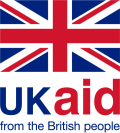You are here
Watershed development in India: Case study summary
In 2014, PROFOR supported a study that aimed to gather lessons learned and good practices from three high profile and successful watershed management projects in India: The Karnataka Watershed Development Project, the Uttaranchal Decentralized Watershed Development Project, and the Himachal Pradesh Mid-Himalayan Watershed Development Project.
The main knowledge product was a peer-reviewed high-quality report that outlined the evolution of watershed development policy and practice in India. The report consolidated lessons learned from best practices and contributes to improved policies and programs for watershed development and management. Apart from dissemination of the report, presentations were made at formal launch events, seminars and workshops in India and in Washington DC.
The most tangible outcomes of the report included new studies, projects and influence on project design within India and beyond to Nigeria, Malawi, and Haiti. This came about directly because decision-makers (or those who could influence decision-makers) had access to the findings of the study.
In India, the recommendations in the report heavily influenced the objectives of the Neeranchal National Watershed Project. In addition, the rationale for the “Catchment Assessment and Planning for Watershed Management” study, comes directly from the discussion in the report of managing upstream and downstream inter-relations.
In Nigeria and Malawi, senior Bank staff used material from the report to design the Nigeria Erosion and Watershed Management Project (NEWMAP) and the Shire River Basin Management Project respectively. The PROFOR work provides a good benchmark to compare the evolution of the Malawi and Nigeria watershed components during implementation. In Haiti, following the formal launch of the report, the World Bank Task Team Leader (TTL) in charge of the HT Sustainable Rural and Small Towns Water and Sanitation Project contacted one of the report authors to discuss how the lessons learned could improve the design of the Haiti project.
The India, Malawi, Nigeria, and Haiti examples illustrate the nature of changes in World Bank practice in designing projects, initiating studies and re-aligning implementation processes as a result of the findings of the report. The India work, in particular, is significant in that, from the assorted work done by various agencies and programs over the years, the best practices have been condensed into revised guidelines for the national watershed program, the IWMP; and technical support has been provided to the main national-level watershed development program in India, the Prime Minister’s Krishi Sinchayee Yojana (PMKSY).
Given the size of the IWMP (~USD 500 million/year) and, given that the IWMP is now the watershed component of an even larger nation-wide program, the PMKSY, with an outlay of USD 850 million for 2016-17 alone, its potential impact is very large.
Over the course of the 8-year, USD 357 million Neeranchal project, this technical support is expected to translate into policy and program improvements that will affect the Indian watershed management program, for which the Government of India has allocated around USD 240 million for 2017-18 alone.[1] Given its objectives to address water resource and watershed management in dryland areas through improved technology and techniques, the IWMP could have significant impacts on poverty reduction, biodiversity conservation, and climate change.
[1] DoLR. 2016. Outcome Budget 2016-17 of Ministry of Rural Development, Department of Land Resources. [pdf] New Delhi: Department of Land Resources, Ministry of Rural Development, Government of India. Available at http://dolr.nic.in/dolr/downloads/pdfs/Outcome%20Budget%202016-17.pdf








